By Mary McCarthy
San Carlos is a beach town about 20 minutes from Guaymas, Sonora, known historically for fishing and standing up to the French. The story told locally is that when the French moved north into Sonora, intending to take the state for its goldfields, the men and women of Guaymas dressed in military uniforms and stood on the hills surrounding Guaymas, appearing to be a formidable, defending force. The town at that time (1854) was comprised of 2,000 residents, made up of Europeans, South Americans, and local tribes. The French withdrew.
Before, and for some time after, this event Guaymas was known as a sleepy, small fishing town. San Carlos was the outback, with a few ranches and cows. The area I currently live in, Ranchitos Campestres, was an undeveloped rural outpost. This is no longer true.
Get Your Free Mexico Report Today!
Get Your Free Mexico Report Today!
Learn more about Mexico and other countries in our daily postcard e-letter. Simply enter your email address below and we’ll send you a free special report – Mexico: The Perfect Close-to-Home Retirement Haven.
By submitting your email address, you will receive a free subscription to IL Postcards and special offers from International Living and our affiliates. You can unsubscribe at any time, and we encourage you to read more about our Privacy Policy.
Retire in San Carlos
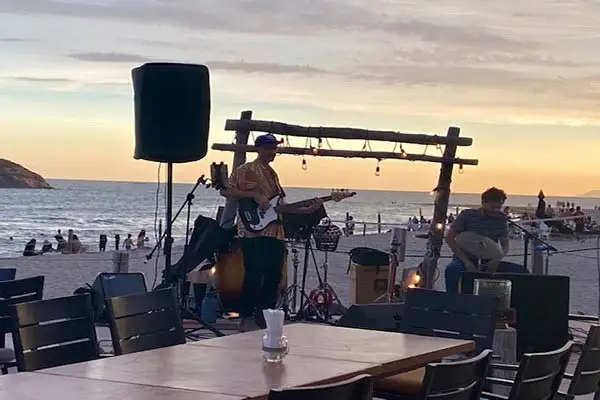
San Carlos is now a lively beach town populated by Mexicans, Canadians, and people from the United States. It is a getaway of beach, good restaurants, hiking, fishing, watersports, and boating. There are two world-class Marinas, Marina San Carlos and Marina Real, with over 700 jetties. On any given day, glancing out at the water, sailboats, yachts, and kayaks can be seen. Windsurfing is popular off one of the beaches. Off San Francisco Beach, on any morning, the paddleboarders ride serenely on calm seas. In addition to the ocean's options, there is excellent hiking in Canyon Nacapule, which contains an interesting variety of desert plants and palm trees. For the skilled climbers, Cerro Tetakawi is an exciting climb, with a vista that is one of the best in the world. There is no shortage of recreational activities in the area.
Hermosillo is an hour and 20 minutes away if you crave city life, with a well-stocked Costco, a Petco, and a Liverpool department store, similar to Dillard's in the United States. Movies, cafes, and excellent steak houses give the traveler many options for fine dining and entertainment. Known as the “City of the Sun,” Hermosillo is hot in the summer. It is very similar to Phoenix. Guaymas is only 20 minutes from San Carlos and has a Sam’s Club, Walmart, and numerous other stores, in addition to some excellent restaurants.
San Carlos itself has many restaurants, ranging from high-end dining with various specialties, both seafood and beef dishes, to excellent street tacos at nightly pop-up taco stands, which serve birrea, mariscos, and carne asada, all a delight to the palate. The food is delicious and the ingredients fresh. My favorites are the fresh fruits, mangos with chili, and the seasonal dragon fruit. There is a local dragon fruit farm (Rancho Pitahaya) producing some of the best dragon fruit I have tasted. Pitahaya originated in southern Mexico and northern Central America and has been cultivated in southeast Asia. It is delicious. The climate is perfect for the cultivation of many fruits and vegetables known in North America. The area is also known for cattle ranching.
As to the weather in San Carlos, most of the year, anyone from snow country would describe the climate as perfect. Sunny and in the seventies for much of the year, during December, January, and February, the temperature does dip into the high forties at night. During the fall and spring, the weather is lovely, sunny, and temperate. Due to the town's location, safely placed on the Sea of Cortez, the risk of hurricanes is minimal, although there have been some. The ocean is swimmable for most of the year. There is also the option of swimming in numerous pools that are available at local restaurants. Yes, restaurants! You can have breakfast and swim, or lunch and swim, in several places. So, a lazy Sunday brunch can be topped off with a swim. There is a promenade overlooking a pleasant beach and a malecón (boardwalk) for wandering high over the cliffs by the ocean. The views are amazing. Miles of undisturbed beaches lay west of the town proper. For the adventurous, it is possible to drive west to La Mancha one, two, and three—tiny fishing towns with several restaurants specializing in seafood right off the boats. As you drive out into these small towns, it is possible to catch a glimpse of what San Carlos would have looked like 40 years ago.
Lifestyle in San Carlos
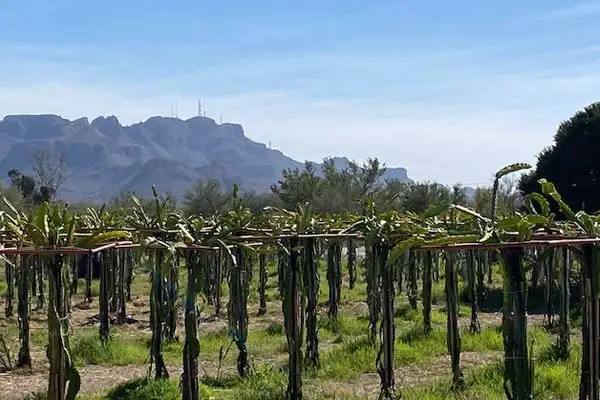
A friend raised in Guaymas told me that no one ever imagined that San Carlos would be what it currently is when she was a girl. "My family would have invested in the place had they imagined what would happen." Another friend talked of riding a horse down the street when he first arrived. "I did not intend on buying here, but I rode by a house for sale the first day I arrived. I told my wife later, honey, we have a house!" Another local gentleman came here as a small boy with his family. He wandered the beaches when there was virtually nothing in the town. He has now lived here for 40 years and has no intention of leaving. The area is a stunning contrast of desert and ocean and, as such, is one of the rarest environments in the world. There is a concerted effort (and program, Grupo Tortuguero de las Californias) to conserve the sea turtle population, which many local Mexicans, Americans, and Canadians participate in. Every year in early winter, the sea turtles are assisted into the ocean and their nests guarded. This is a fantastic experience for people of all ages.
A bit of the old west lives on in my area. One night as I read on my tereza, I heard a horse riding by and looked up to see a young man riding his horse, checking his smartphone. Had I been quick enough, I would have snapped a picture, the old and the new west caught in a photo. Occasionally the local horses wander past my yard on their way home in the evening. I find this highly entertaining. Although there is a debate about whether the horses should be allowed to roam, there is an open range law in this section of Mexico, and the animals are allowed to forage.
Living is easy in this area. If you are from the United States and crave something from the U.S., the drive to the border is fast and safe. The toll road from Arizona to San Carlos is safe and well maintained. The total tariff for driving the road is about 200 pesos or ten U.S dollars. Six hours, and you will arrive in central Tucson. If you desire a trip to the colonial cities of Mexico, a flight from Hermosillo to any of these cities is easy, with three local Mexican carriers supplying the flights. Several local stores carry foodstuffs from Mexico and the U.S., and it is possible to actually buy gluten-free and vegan foods. As mentioned before, the fruits and vegetables are wonderful and fresh. In addition, there is a fish store with fish right out of the bay.
Cost of Living in San Carlos
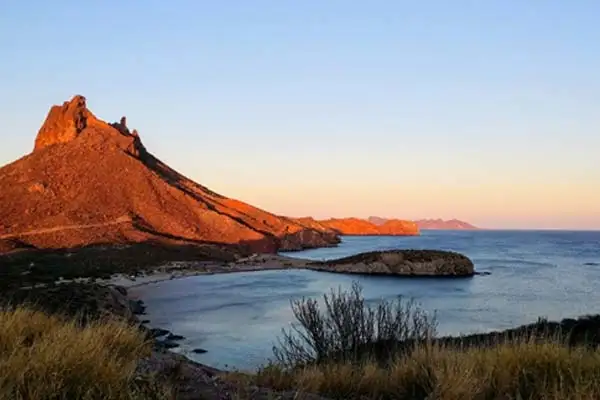
The rents in the area range from $600 to $1,000, depending on what amenities are included. There are several highly rated, safe, and well-serviced RV parks in San Carlos. Many people elect to simply come down for the winter, bringing their homes with them. As to buying in the area, several dependable real estate firms are willing to assist you. Electricity and water are more reasonably priced than in the U.S., although this depends on usage as it does everywhere. Most cooking and water heating is done using propane, and several companies provide this utility. For many citizens of the U.S., the cost of living will be considerably less than what they would pay in the U.S. This makes living here, either full-time or part, an easy choice.
It is not the cost of living that is the primary reason to choose this area. As many would say, it is the people and the general lifestyle. There is a quality of courtesy and friendliness that makes life here easier than in many other locales. The beauty and uniqueness of the environment also is a draw. Life is delightful, whether sailing or watching turtles hatch or spending a lazy dinner overlooking the Sea of Cortez.
Top Ten Things to Do in San Carlos

1. Visit San Jose de Guaymas
The town is 15 minutes from San Carlos and feels miles away from the bustle of afternoon traffic in Guaymas. It is one of my favorite outings. The town is not glamorous but tranquil, a touch of old Mexico very near the tourist beaches. In the near distance, a rooster crows, probably guarding against a neighborhood dog, and an older gentleman sits on his front porch mending a fishing net. A visit here is a step back in time and a fun way to spend an afternoon.
2. Shop for Antiques
The other day a friend showed me an acquisition found at the Enpalme market, a beautiful, old, inlaid wood side table. We both love antiques. "Not many people like older pieces," he shared, savoring his find. So much the better for those of us that do. For the dedicated eye, antiques can be found. In addition, the market offers an assortment of food, handicrafts, and people watching. For a lazy and timeless afternoon, the market is a great outing.
3. Tour Rancho Pitaya
For a more planned event, dinner and a tour of the farm at Rancho Pitaya is both informative and fun. Greg and Elizabeth Hovey have a dragon fruit (pitaya) farm. If you haven't tasted dragon fruit, I recommend you do. Like kiwi fruit, the taste is hard to describe. Fresh and sweet, they are delicious. The afternoon at the farm begins with drinks and getting to know the group attending that day. When I visited, the guests were a mix of locals, Mexican and American, and tourists in the area for only a couple of weeks. After introductions, we toured the farm. There are 1,000 plants yielding thousands of fruits a year. Then Greg took all of us into the desert for a walk through the massive cardon cacti. The wind sang through the giants, and if I stood on my toes, I could see the Sea of Cortez.
4. Hike the Sonoran Desert
Hiking the desert is well worth the trip. At the edge of the Sea of Cortez is the vibrant ecosystem of the Sonoran Desert. Nacapule Canyon is only one of the areas to visit. It is a fascinating hike through an arid landscape of cactus. Then suddenly, there is a semi-tropical niche of palm trees and a stream. If you hike up to the top of the canyon, the ocean lies blue in the distance.
Climbing Cerro Tetakawi (“rocky mountain” in the Yaqui language) is a challenging hike for the adventurous. The climb is steep and demanding, but the view and the accomplishment are worth the trip. The vista is expansive, covering most of San Carlos and some of nearby Guaymas. The view of the Sea of Cortez is spectacular. The desert air is fresh, touched with the aroma of the sea.
5. Try a Water Adventure
For a more water-based adventure, snorkeling or diving off the rocky shore of Playa Piedras Pintas, at the base of Cerro Tetakawi, presents the joys of clear water and fish of many kinds. As Jacques Cousteau once stated, the Sea of Cortez is the world’s aquarium. This was evident on the mild spring day I went snorkeling. Schools of fish, some tiny and one giant curious grouper, swam the waters off the beach. A local marine biologist will take you out and help you identify who you are looking at.
But for me, snorkeling with the sea lions was the most fun by far. When the adult sea lions are busy giving birth in the early summer, the teens are bored and looking for someone to play with. A human will do. Before taking a trip out to one of the many islands off the Sonoran coast, I did not know this. Moments after jumping in, a teenager swam directly at me, stopping inches from my face. They turned and dove downward. It took me a moment to realize this was a game of chase. I was expected to follow. An hour later, tired and a bit cold, I reluctantly left the water. Three of my playmates looked at me with a question, "But, why are you leaving? We were having so much fun."
6. Explore San Pedro Island
San Pedro Island is about an hour and a half off the coast of San Carlos. This is the place to go to play with the sea dogs. They are not vicious critters. Instead, they are playful and are great fun.
7. Go Kiteboarding
Then there is kiteboarding. Many people prefer Catch 22 Beach (named in reference to the movie of the same name which was filmed there), near Playa Algodones, where the wind whips up to a brisk tempo. Perfect for jetting across the water and into the air.
Along the shore are several good restaurants, many nights in the week there is live music. After a hard day of kiteboarding, a relaxing couple of hours with friends, listening to music, and watching the sun go down from the shore is an excellent way to end the day.
8. Enjoy the Music
There is a lot of live music available in San Carlos. Many of the local restaurants feature not only good food but live music. Sensanova, The Dudes, and many more local musicians play the bars and restaurants in the area. Music ranging from jazz to rock and roll is available. For a music lover, the variety of music will satisfy whatever taste you have. Many of these venues have a dance floor as well.
9. Sample the Local Food
As you might have guessed, eating is a participatory sport here. There is a lot to do that involves moving and working up an appetite. For a town of only 7,000, there is an abundance of excellent restaurants featuring seafood and excellent beef. Sonora has long been a cattle ranching area (San Carlos was a cattle ranch not long ago), so beef is as natural a choice as seafood. During the day and at night along the main street, there are taco stands that serve all the local delicacies. Some of the best meals I have eaten are "street food." Don't be afraid to try it!
10. Explore the Beaches
Finally, there are the beaches, which is what most people come for. There are miles of beautiful beach from Playa San Francisco, a popular city beach, to Playa Algodones, a white-sand beach. Finally, at the end of the road is La Manga III. This tiny fishing village has a beach and is largely empty, even when the crowds have massed on the city beaches. The water is swimmable for most of the year. The beaches are a gathering spot for swimmers, divers, families, and beachcombers looking for seashells. The beauty of the ocean and the desert is not to be equaled.
Safe and Settled in a $250-a-Month Rental
By Mary McCarthy
I have never been thrilled with the idea of being sick, so moving to Mexico in the middle of a pandemic was perhaps an odd idea.
I was safe in the U.S. I lived in a small town in the mountains, and because my town was remote, we had not been deeply touched by overwhelmed hospitals, fear, and lockdown. Many people did not see Covid coming into force in our area. As it turned out, they were essentially correct. Although this did not make it easier for those who had lost someone, there were not many deaths.
I had decided to go online with my business in mid-March, due to both not being able to protect myself or my clients. I knew there was a risk. As of St. Patrick’s Day 2020, I was entirely online. It was awkward at first, but then I grew to like it. Not having to commute was the first noticeable benefit, then the ease of my mornings was the next.
After months of working online with no loss of clients, I started thinking…
I had always loved Mexico. For years I had traveled, somewhat randomly, in Mexico. First picking one location, then another. But I had not been back in 20 years. Of course, the stories about cartel violence and danger haunted the news. The focus on all those attempting to immigrate to the United States, followed closely behind by stories of violence, gave me pause. I wondered if it was as I remembered it. I had traveled predominantly in the '80s and '90s. Maybe Mexico had changed?
Just before the pandemic lockdown, I had traveled to Puerto Vallarta with a friend. She was nervous. I pretended not to be. As it turned out, we had a fantastic time. Strolling the Malecón at 11 at night with all the other locals and visitors, we relaxed. When I returned Stateside after this visit the impressions of the ease and fun remained.
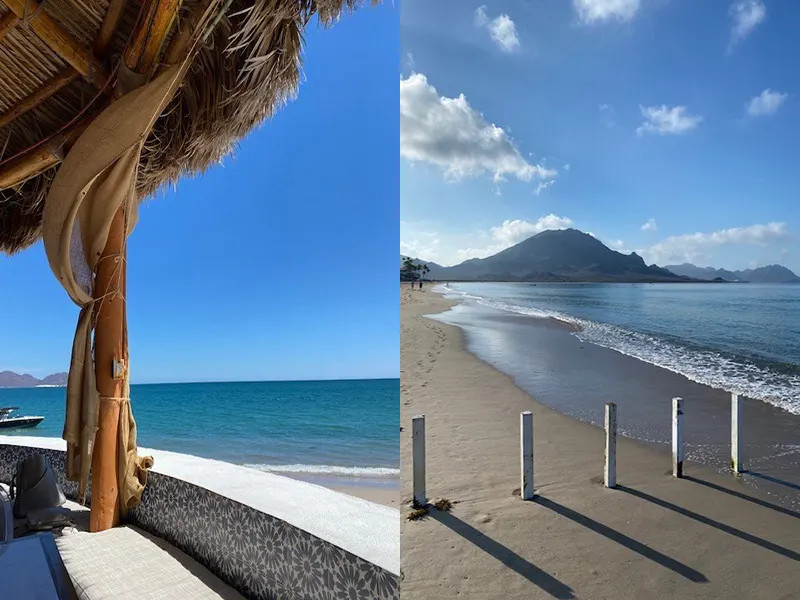
Mexico’s appeal is clear to see.
Months later, I talked to a friend who was sitting out the pandemic in the beach resort of Bucerías in Nayarit in western Mexico. She said she felt safer there than in her native state back in the U.S. People wore masks and everything seemed calmer. That is when I seriously began to think of moving.
I told many people that I was just escaping the cold. As a 69-year-old, this was believable. “Just for the winter” was my refrain. I understood working online was an opportunity. I loved the colors, the people, and the food of my adopted country, and I had thought of moving to Mexico years before.
So, at the end of November 2020, I made arrangements for the neighbor to water my plants, and packed my Nissan Rogue with everything I thought I might need and my two aging dogs. I reserved an Airbnb and set off on my way south.
The trip was exhausting—four days of driving interspersed with Airbnb stays, and a week stopover at a friend’s house in Tucson. My dogs were exhausted, as was I.
Arriving at my destination, San Carlos, a small town on the Sea of Cortez, was a relief. My oldest dog had stopped eating, and I was frightened about whether this trip would kill him. The Airbnb had no heat in most of the house, and it was cold. The only thing that worked well was the WiFi and the interactions with my host. Thank heavens!
The Airbnb host referred me to her vet in a nearby city, and I ferried my sick dog to him. He was delightful, telling me stories of a dog he treated at 24 years old. The dog couldn’t see or hear but still loved her food and her walks. In my bad Spanish and his limited English, the vet told me what to do. Six months later, my Charlie is alive and well at 19.
Two months after arriving, I found a year-round rental. That is a bit of a story in itself...
I walked into an art gallery, and after looking at paintings, I asked the owner if she sold any warm clothing. She must have thought I was nuts. She paused and said, “Do you want to rent a house?” Two days later, I went to look at the home she was renting. The sun streamed through the windows, and there was heat. That was all I needed to say yes.
The house was painted baby vomit pink, and I asked if it could be painted. My new landlady said yes. Two weeks later, with brilliant blues and reds adorning the walls, I moved in.
I had been extremely lucky, the house, referred to as a casita, is 700 square feet, and the rent is cheap—$250 a month, with a year’s lease. It has two bedrooms, a bath, an upstairs terrace, a back terrace, and a front porch. Like many homes in Mexico, there is significant outside living space.
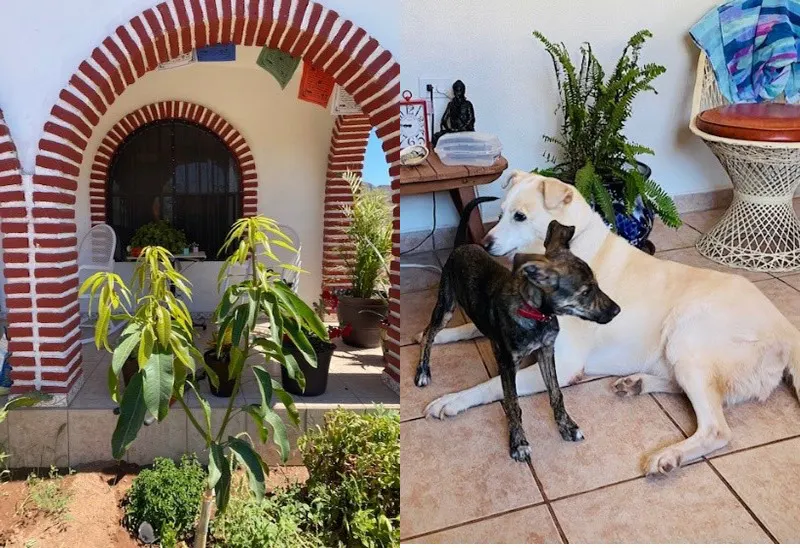
Mary and her dogs have settled in to their new Mexico home.
What I did not know at the time was that in Mexico, it is more often the job of the tenants to do repairs or decorative work on a rental. I was lucky the landlady had agreed to paint the home prior to my moving in.
Many things are different in Mexico, obviously. Like the language. I had been studying Spanish on Duolingo for nine months when I moved. This helped immensely. I strongly recommend people learn Spanish. It is great fun.
The laws are different here too, as are the customs. Dogs stay outside at night to warn the homeowners of any danger. The consequence of this is a cacophony of dogs and roosters all night long in more rural places, and no, roosters don’t wait for dawn to crow.
The food is different. In my opinion, better. But it puzzled me that the vegetables I had bought four days ago went bad. Then I realized much of the fruit and veggies are picked fresh, not green, so they go bad quickly. The good news is they taste like fruits and vegetables should.
Mexico is very generous with their tourist visas which allow 180-day visits. I decided to opt to get a resident visa, which comes in two flavors. One is a visa temporal and one a visa permanente. There are advantages with both visas, most simply, buying a car and getting a car plated in Mexico is the most direct benefit. This way, if you live in northern Sonora State, you can simply drive anywhere without getting a TIP (Temporary Import Permit). If you like road trips, this is helpful.
Oh, and then there’s music. When I rented my house, I decided to have the bedroom at the back of the house. I knew about street noise and parties that go on until five a.m. This was a wise idea. I sleep like a baby. It is true, though, for many areas, whether tourist or residential, parties are popular, with music and karaoke lasting well into the early morning hours. So, plan accordingly. The volume level for many Americans is an adjustment. I think allowing dogs to bark, roosters to crow, and people to celebrate is not wrong. It is life.
My friends, who have only known me for 10 years or less, have stopped asking when I will return. My friends who have known me since my twenties were never confused. “I knew you would move there eventually.” They knew better than I.
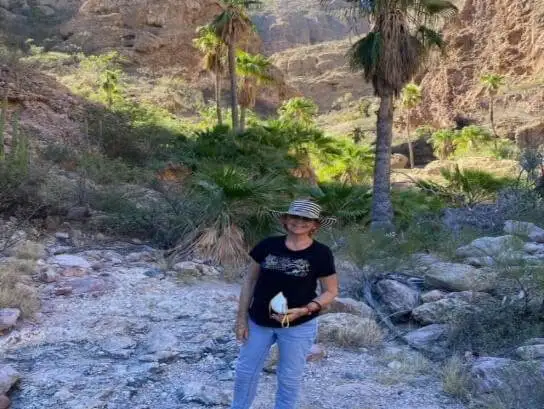
A month ago, I was fully vaccinated. I feel more comfortable now going to the store. For the first time in over a year, I went to a mall. It was wonderful.
I will meet my friend, who was afraid of Mexico, in Puerto Vallarta in two months. She now looks forward to visiting.
I like my new country and most of all I like the people. The view from my roof terrace is an added benefit. Yes, it is cheaper to live here, but that is not why I am here. It is a beautiful place to live, and I am glad I took the chance.
Featured Image Copyright: ©iStock/AndreaCopp
Get Your Free Mexico Report Today!
Get Your Free Mexico Report Today!
Learn more about Mexico and other countries in our daily postcard e-letter. Simply enter your email address below and we’ll send you a free special report – Mexico: The Perfect Close-to-Home Retirement Haven.
By submitting your email address, you will receive a free subscription to IL Postcards and special offers from International Living and our affiliates. You can unsubscribe at any time, and we encourage you to read more about our Privacy Policy.














